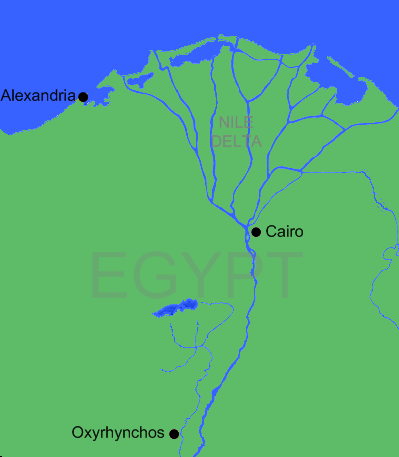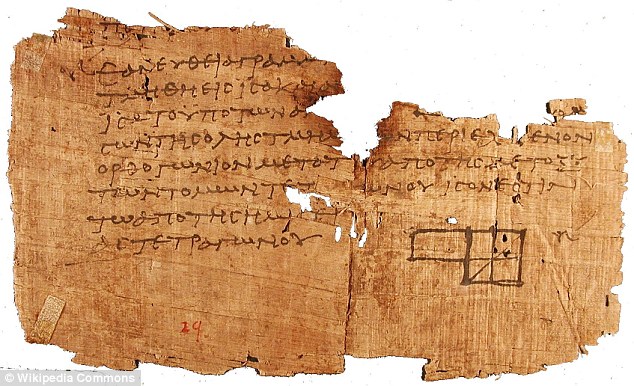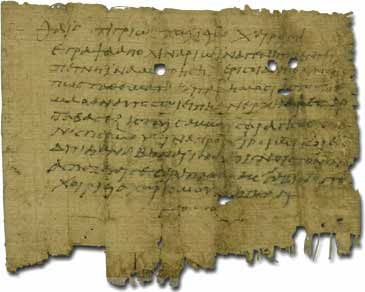One way we know about historical events is to translate documents that were written centuries ago. Without them, we wouldn’t be able to learn for certain what went on or what our ancestors were like.
Just recently, experts have translated long-lost papyrus sheets full of an array of different themes; from plays about Moses to a new hangover cure. The documents had been found on an Egyptian garbage pile more than one hundred years ago.
Thanks to the translation, we now know the speech explains how the prophet was given the name Moses because he was found on the riverbank. The original script was similar to a Greek tragedy from the 2nd century BC. Although some may not find it impressive, archaeologists are amazed. This finding means that the classic Bible story was performed for a group more than 2,000 years before Charlton Heston played Moses in The Ten Commandments, which was released in 1956.
This speech is just one of the 500,000 documents that were found when Victorian archaeologists Bernard Grenfell and Arthur Hunt discovered an ancient Egyptian city. They originally found the documents in Oxyrhynchus, which is about 120 miles south of Cairo, in 1897.

Since then, over all of those years in between, archaeologists have been working on the papyrus scrolls, trying to translate them all. Unfortunately, only 5,000 of them had been translated, but thanks to dozens of volunteers, they were able to make it happen. Who knows just how few of those scrolls would have been translated if people hadn’t volunteered? Those that have been translated have been released to the public.
One of the other notable scrolls discovered by the Ancient Lives project was a transcript from Euripides. For the longest time, one of his plays had been missing. It was called Andromeda and was a tragedy first produced in 417 BC. Other documents include a doctor’s note from the 3rd century AD which describes the body of a drowned slave girl. He describes in the writing how her body was twisted and lifeless.
One of the most interesting documents, according to archaeologists, is a fragment of the Book of Exodus, which was also written in the style of a Greek tragedy. Historians know little about the author, Ezekiel. That document had been quoted in others by Church Father Eusebius who wrote 400 years later, but no one had ever seen it.

One of the archaeologists on the project, Dr. Dirk Oddbink, said that he wasn’t certain if that actual document existed. It could have been that Eusebius had been made up or hadn’t remembered it correctly. He added, though, that now they had a real copy of the speech by Moses that was written in iambic trimeters; it told the story of his life and how he had been discovered when he was a baby. He described it as though he was putting “flesh and bone” on the work of literature.
Another interesting document found along with 24 other ancient texts includes what is considered the first original cure for a hangover. The hangover cure document had been written in Greek and one of the recipes recorded describes it as how to take care of a “drunken headache.” The recipe called for leaves from a shrub called Alexandrian chamaedaphne. The person is to string the leaves of the evergreen plant together and wear it around their neck.
Some of the scholars working on the project are most excited about the fragments of the lost gospel which discuss Jesus. They also found letters and documents concerning the gospel that date from between 500 BC and 1000 AD. They believe this will open up a new world about the ancient lives of Graeco-Roman Egypt.

What amazed Lintott the most was that the area had been used by ancient people for so long there were letters in the heap so far down they had to dig 25 feet deep to retrieve all of them. Because the two young men were backpacking, they did not have shovels, so they dug the hole with their bare hands. At one point, the men began paying the locals to help dig the hole. While doing so, they had to make sure the people who helped did not take the papyrus for agricultural purposes – papyrus is a popular material for compost.
Lincott, had explained that the papyrus had been written in Greek because at that time Egypt was under control by the Greeks. Then, later, it was under the rule of the Romans. Many of those papyri had not been read for over a thousand years. The scholars working on the project had excitedly been afforded a glimpse of the everyday life of the ancient Egyptians. What is unique about this project is that the team of archaeologists is allowing the public to help them translate the rest of the documents. They have officially called the project Citizen Science. The scholars said that it takes about three to five people to look at each fragment of papyrus.
One of the developers and designers, William MacFarlane, said that with the trial and error the whole team is using, they will soon have the ability to translate these papers down to a science, so future generations can look back and easily translate an ancient document.